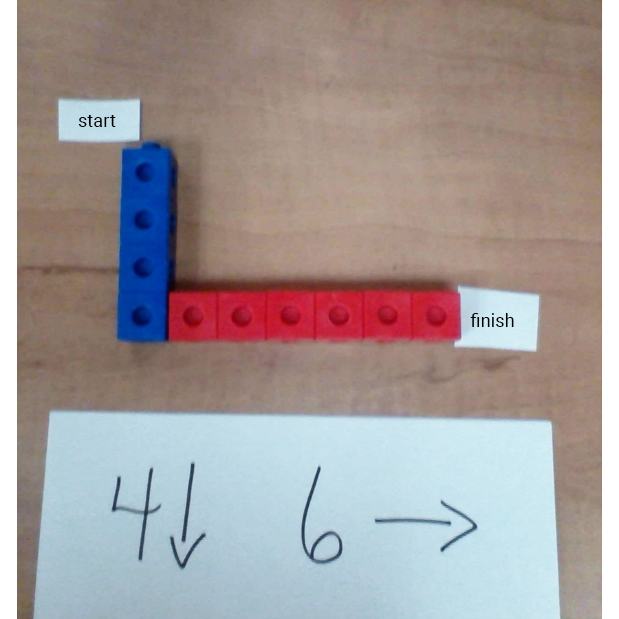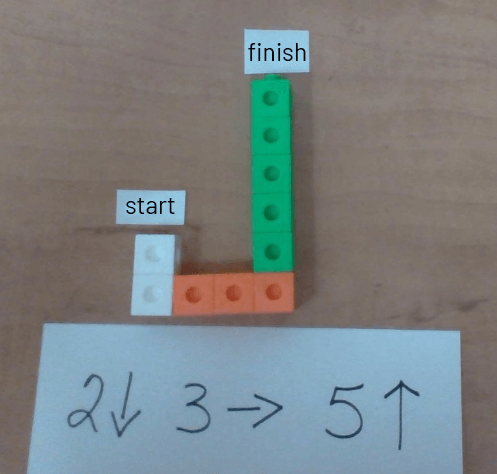C3.1 Solve problems and create computational representations of mathematical situations by writing and executing code, including code that involves sequential events.
Activity 1: Sequential Events and Number Decomposition
Ask the student to interpret the sequence of movements shown in the following pictures:


Ask students the following questions:
- What do you notice?
- Do you see any similarities between the two sequences of events?
- Do you see any differences between the two sequences of events?
- Are there other possible sequences that could also result in the sprite landing on 10?
Have the student create other possible patterns to have combinations of 10.
Ask students to write their patterns in pseudocode.
Have the student choose a number and create a set of sequential instructions that show the decomposition of the chosen number.
Ask the student to find several possible combinations for the same number. Then, ask them to write a code that represents their pattern in a block programming program.
Activity 2: Sequential Events and Patterns
Have students create a code that performs a pattern. The pattern can be created using movement, sounds, geometric shapes, letters and numbers. It can also be a pattern found in everyday life.
Select various codes and print them. Display a gallery of codes. Students can circulate and read each other's codes to express and discuss their understanding of the codes.
Have students find the pattern, tell if the pattern is a repeating pattern or an increasing pattern, and then make near and far predictions.
Activity 3: Sequential Events and Comparing the Value of Canadian Coins
Have students work in pairs to create a code that illustrates the value of Canadian currency. Students can use sprites that resemble Canadian currency and sequential movements to place the coins in a variety of patterns.
For example, a pattern in which two dimes and a nickel are repeated (AAB pattern core), also represents the value of a quarter (10 + 10 + 5 = 25). The student could create a code so that the dimes and nickels disappear and are replaced by a quarter in the pattern.
